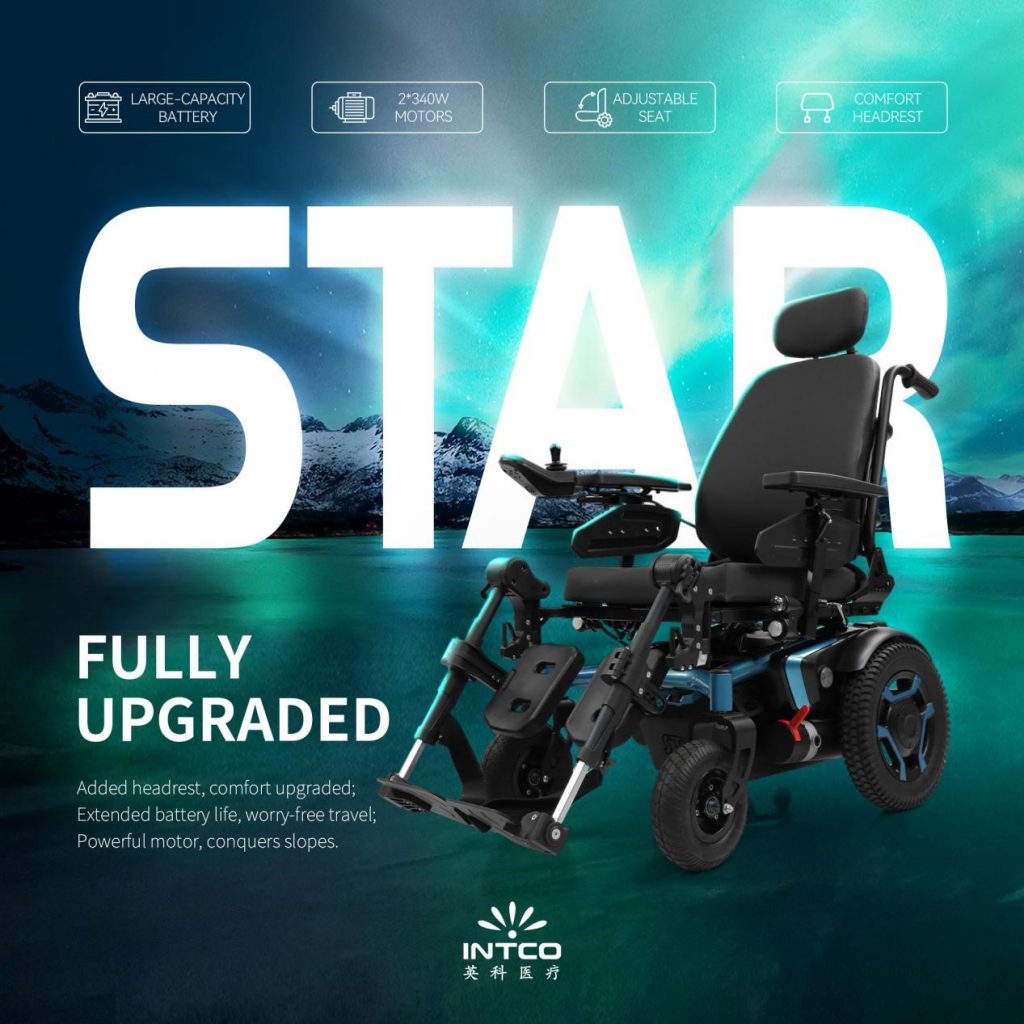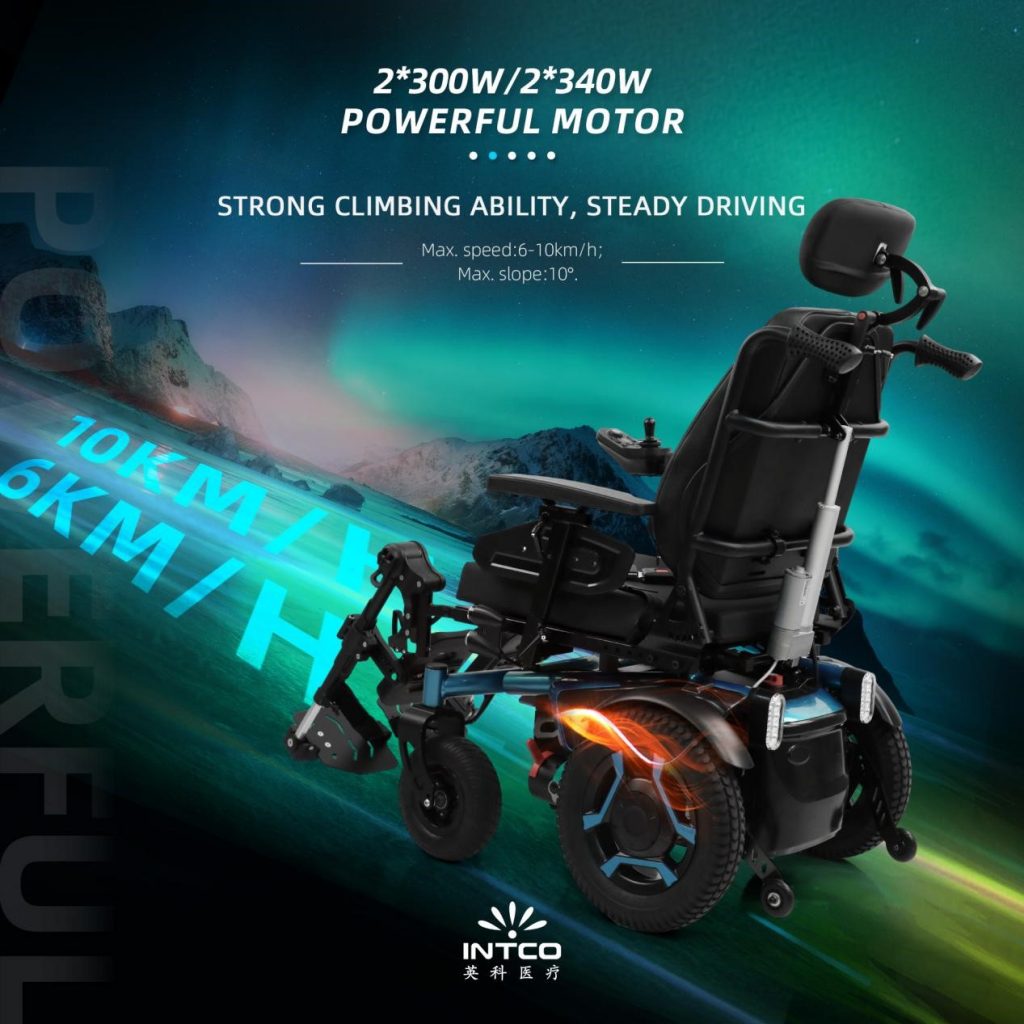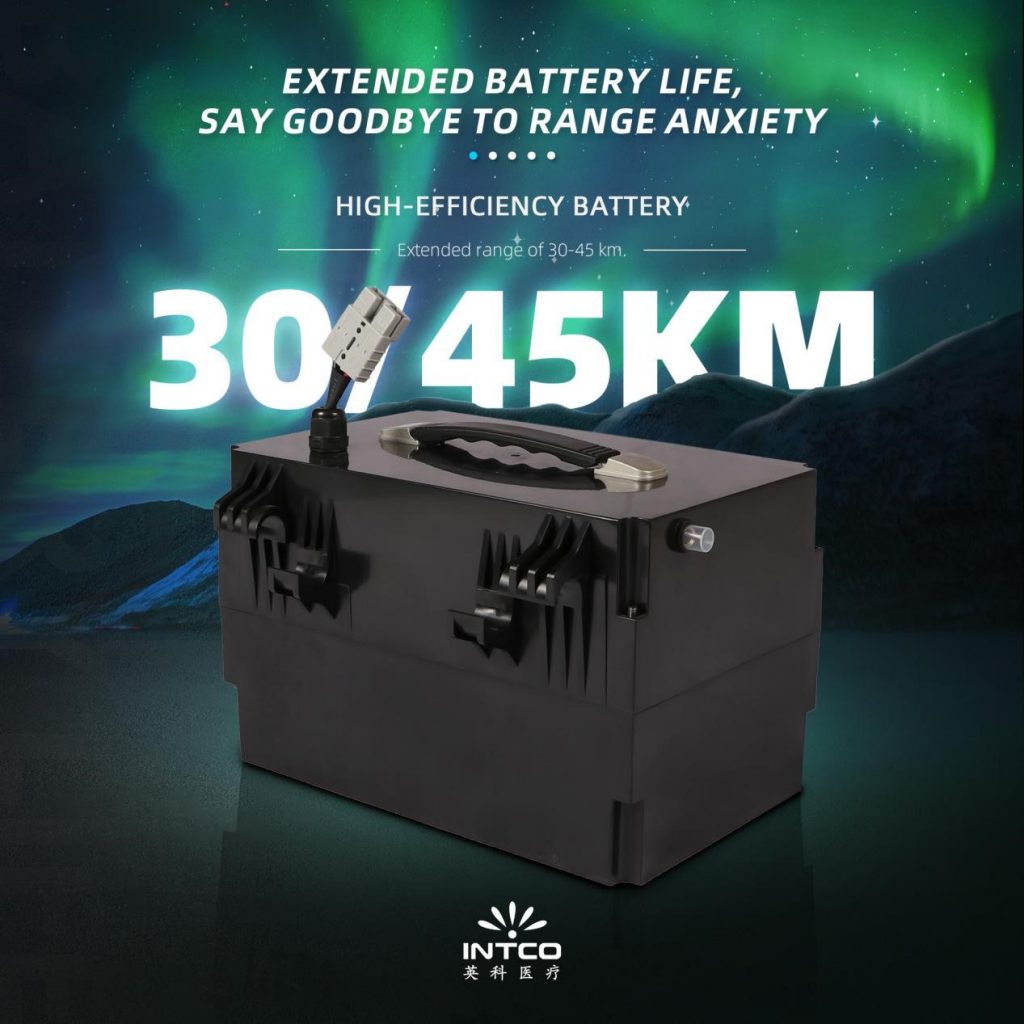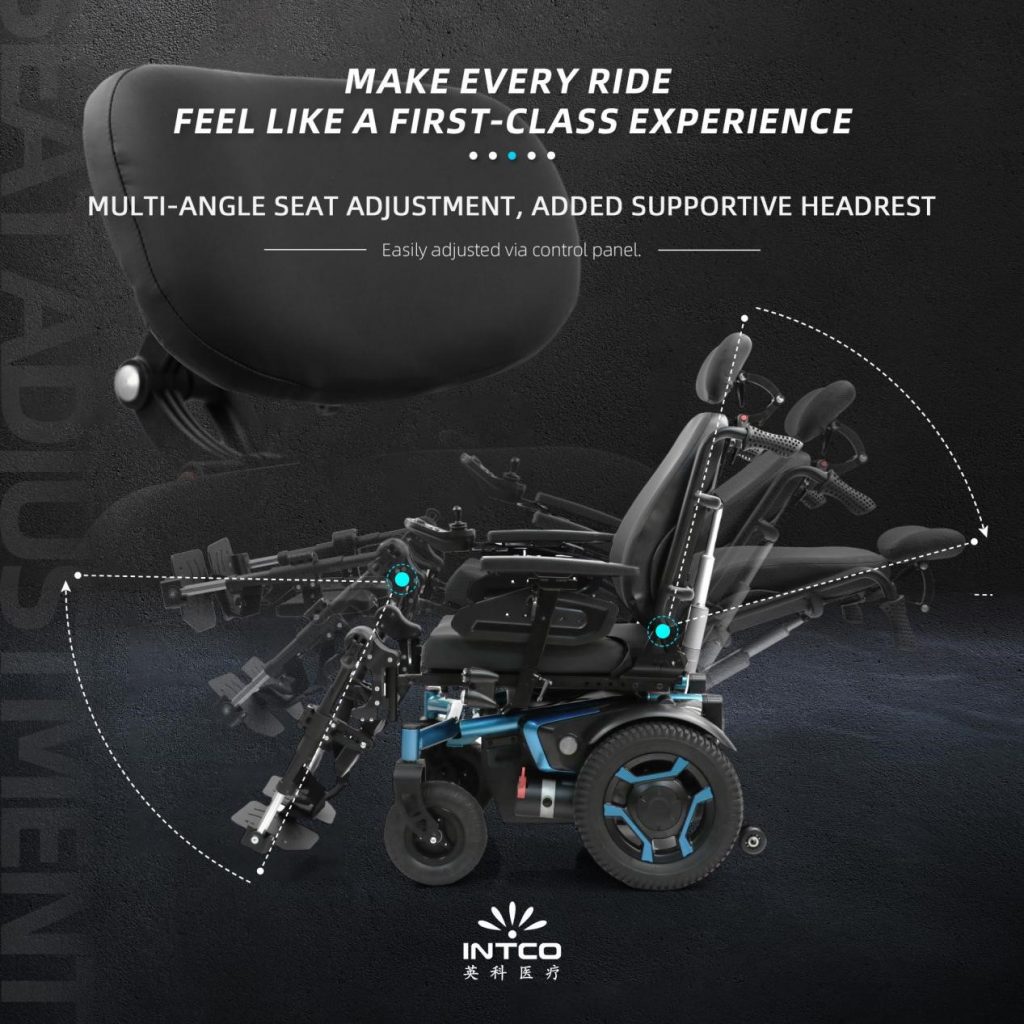Contact Us
Power Wheelchair Pitfalls Avoid These Common Usage Mistakes
A power wheelchair is a motorized mobility device designed to aid individuals with limited physical abilities in maintaining independence and mobility. Equipped with an electric motor, a power wheelchair enables users to navigate various terrains with ease, offering greater freedom compared to manual wheelchairs. These devices are controlled through joysticks or alternative control systems tailored to meet diverse user needs. With advances in technology, power wheelchairs have become more versatile and accessible, fostering enhanced quality of life.
Benefits of Using a Power Wheelchair
Utilizing a power wheelchair provides a myriad of benefits, significantly improving the user’s quality of life. These devices offer increased independence by enabling users to move around without assistance. The ergonomic design of power wheelchairs ensures better posture and reduces the risk of developing pressure sores. Furthermore, power wheelchairs come with advanced features such as reclining seats and adjustable leg rests, promoting comfort during prolonged use. For individuals with severe mobility impairments, power wheelchairs serve as an essential tool for maintaining an active and fulfilling lifestyle.
Key Features of Power Wheelchairs
Power wheelchairs are equipped with a variety of features designed to cater to the specific needs of users. One of the key features includes robust motors that deliver reliable performance and endurance. Adjustable seating systems provide customized support and comfort, essential for users with specific medical conditions. Joystick controls or sip-and-puff systems offer intuitive maneuverability, ensuring ease of use. Additionally, power wheelchairs often come with detachable batteries for convenient charging, along with durable tires capable of tackling diverse terrains, from sidewalks to gravel paths.
Common Mistakes When Using a Power Wheelchair
Ignoring Manufacturer Guidelines
One of the most common mistakes users make is ignoring the manufacturer guidelines. These guidelines are designed to ensure the safe and effective operation of the power wheelchair. Ignoring them can lead to preventable accidents and costly repairs. For example, manufacturers provide specific instructions on maximum weight limits and battery maintenance that users should adhere to. Not following these guidelines can not only damage the wheelchair but also void the warranty, leaving users without support for repairs.
Overloading the Wheelchair
Another frequent error is overloading the power wheelchair. Each wheelchair comes with a specified weight limit, including the user’s weight and any additional items or accessories carried. Exceeding this limit can strain the motor and other components, potentially leading to mechanical failures. Overloading can also make the wheelchair unstable, increasing the risk of tipping over or losing control. Users should be mindful of the weight specifications and avoid carrying heavy bags or packages that push the wheelchair beyond its recommended capacity.
Neglecting Regular Maintenance
Inspecting the Battery
Regular battery inspections are crucial for the maintenance of a power wheelchair. The battery is the heart of the device, and neglecting it can result in reduced performance and unexpected breakdowns. Users should check the battery’s health regularly, ensuring it is charged according to the manufacturer’s guidelines. Signs of corrosion or wear and tear should be addressed promptly to avoid more significant issues. Scheduling routine checks with a professional can help extend the battery’s lifespan and ensure reliable operation.
Checking Tire Conditions
Tire conditions play a vital role in the safety and performance of a power wheelchair. Regularly inspecting the tires for wear and tear, punctures, and sufficient air pressure is essential. Worn-out or damaged tires can affect the wheelchair’s traction, making it difficult to navigate various surfaces and increasing the risk of accidents. Maintaining the correct tire pressure not only enhances maneuverability but also prevents undue stress on the motor. Users should follow the manufacturer’s recommendations for tire care and replacement intervals.
Monitoring Electrical Components
The reliability of a power wheelchair depends heavily on the condition of its electrical components. Regular monitoring of wiring, connectors, and control systems can prevent malfunctions. Loose or frayed wires can lead to short circuits or power failures, while unresponsive control systems can pose safety risks. Users should inspect these components frequently and seek professional assistance if any issues are detected. Keeping the electrical system in good condition ensures consistent and safe operation of the power wheelchair.
As one of the famous brands in the production and manufacture of medical wheelchairs and mobility scooters, INTCO Medical is a high-tech manufacturing company committing to R&D, production and marketing of medical consumables and durable medical equipment with main business covering medical consumables, rehabilitation equipment, physiotherapy care, etc.
Jiangsu Intco Medical Products Co., Ltd, a branch of Intco Medical, focuses on the research, production, and marketing of rehabilitation equipment and therapy products. We specialize in manual and electric wheelchairs, mobility scooters, transfer machines, walking aids, commode chairs, and canes. With hundreds of automated machines, we can produce 1,000,000 manual wheelchairs and 100,000 electric wheelchairs annually, serving over 66 countries and regions worldwide.
Safety Precautions to Consider
Inadequate Training and Familiarization
One crucial safety precaution is ensuring adequate training and familiarization with the power wheelchair. Many users and caregivers underestimate the importance of becoming thoroughly acquainted with the device’s controls and features. Proper training allows users to operate the wheelchair safely and confidently, reducing the likelihood of accidents. Without adequate familiarization, users may misuse controls or fail to utilize features designed to enhance safety and comfort, potentially leading to dangerous situations.
Improper Storage Practices
Improper storage practices can inadvertently damage a power wheelchair, impairing its functionality and safety. Storing the wheelchair in environments prone to extreme temperatures, moisture, or direct sunlight can deteriorate its components over time. It’s vital to store the wheelchair in a clean, dry area where it is protected from the elements. Additionally, ensuring the wheelchair is turned off and its batteries are maintained even when not in use can prolong its lifespan and ensure it is ready for operation when needed.
Skipping Routine Safety Checks
Routine safety checks are an indispensable part of power wheelchair maintenance. Skipping these checks can result in undetected issues that may compromise user safety. Essential safety checks include verifying the functionality of the brakes, ensuring all control systems are responsive, and inspecting seat belts or harnesses for wear and tear. Regularly scheduled professional inspections can also identify potential problems before they become severe, ensuring continuous safe operation and reliability of the power wheelchair.
Avoiding Environmental Hazards
Navigating Uneven Terrain
Navigating uneven terrain presents specific challenges for power wheelchair users. Surfaces like gravel, grass, or inclines require careful maneuvering to avoid tipping over or getting stuck. Users should approach uneven terrain slowly and at a controlled speed, utilizing the wheelchair’s features designed for stability. When possible, selecting routes with more manageable surfaces can further reduce the risk of accidents. Understanding how the wheelchair handles different terrains can significantly enhance the user’s ability to navigate safely and confidently.
Exposure to Extreme Weather Conditions
Handling Wet Conditions
Exposing a power wheelchair to wet conditions can have adverse effects on its electrical and mechanical components. Moisture can lead to corrosion of metal parts and short-circuit electrical systems. Users should avoid operating the wheelchair in heavy rain or through puddles. If exposure to moisture is unavoidable, ensuring the wheelchair is thoroughly dried afterward and inspecting for any signs of damage is crucial.
Managing Hot and Cold Temperatures
Extreme temperatures can impact the performance and longevity of a power wheelchair. Excessive heat can overheat the battery and damage electrical components, while extreme cold can reduce battery efficiency and brittle plastic parts. Users should avoid leaving the wheelchair in direct sunlight for prolonged periods and ensure it is not exposed to freezing temperatures without appropriate protection. Storing the device at stable, moderate temperatures helps maintain its optimal functionality.
Up to now, with a good product reputation, INTCO Medical has been exported products to more than 120 countries and regions in America, Europe, Asia, Africa and Oceania, which is providing practical products and high-quality services to over 10,000 clients.
Misusing Adjustments and Controls
Incorrect Seat Positioning
Incorrect seat positioning can lead to discomfort and potential health issues over time. Adjusting the seat improperly may compromise posture and increase the risk of developing pressure ulcers. It is essential to follow the manufacturer’s guidelines or consult with a healthcare professional to ensure the seat is correctly positioned. Proper seating not only improves comfort but also enhances the wheelchair’s stability and maneuverability.
Mishandling Speed Controls
Speed controls are integral to the safe operation of a power wheelchair. Mishandling these controls, such as sudden acceleration or abrupt stops, can increase the risk of accidents. Users should familiarize themselves with the various speed settings and practice adjusting the speed gradually. Maintaining a consistent, appropriate speed for the environment—such as slower speeds in crowded areas and higher speeds in open, flat spaces—ensures better control and reduces the likelihood of collisions or falls.
Encouraging Proper Usage Habits
Educating Caregivers and Users
Education plays a pivotal role in the safe and effective use of power wheelchairs. Caregivers and users should receive comprehensive training on the device’s operation, maintenance, and safety features. Understanding common pitfalls and best practices helps in preventing mistakes and maximizing the wheelchair’s benefits. Providing ongoing education and resources can empower users and caregivers to manage the wheelchair confidently and independently.
Adhering to Best Practices in Daily Use
Adhering to best practices in the daily use of a power wheelchair ensures its longevity and reliable performance. This includes regularly charging the battery, maintaining cleanliness, and performing routine checks on all critical components. Encouraging habits such as gentle handling of controls, mindful navigation through different environments, and timely addressing any functional irregularities can prevent many common issues. By consistently following these practices, users can enjoy a safe and enriching experience with their power wheelchair while preserving its operational integrity.







